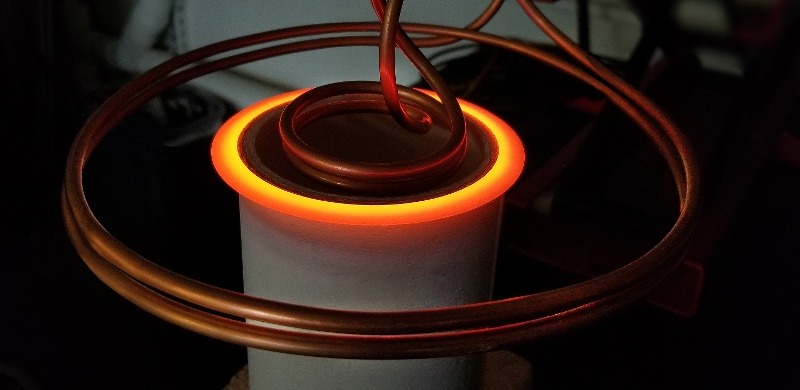Induction Brazing an Aluminum Assembly
Objective A company wanted to assess using induction heating for their aluminum assembly brazing process, and contacted THE LAB at Ambrell to utilize...
Applications
Applications: More
Applications: More

Industries:
Industries: More
Industries: More
Industries: More

Products:
Products: More
Services:
Services: More

Learn:
Learn: More
About:


Annealing is a process where heat is applied to a material to increase its malleability and make it more workable. Or simply put, a metal is typically heated to a specified temperature and cooled, which results in a softened material that is more easily formed. Induction is one heating method that is commonly used for annealing.
Annealing with induction heating delivers several advantages over other heating methods such as flame including:
Induction is highly localized, which helps to ensure only the surface is heated
Induction delivers precise control
Induction doesn't require a great deal of space/footprint within a manufacturing facility
Induction annealing is used in a wide array of industries for a number of applications. Here is a sampling of applications:
Tubes/pipes (stainless steel, steel copper)
Bar and wire
Threads of hardened parts
Seam annealing
Full body annealing
Ammunition annealing (neck and body)
THE LAB at Ambrell has conducted numerous annealing application tests and dozens of application notes are available for your review. Some may be on an application just like yours. Complimentary application testing is also available from THE LAB. 

Objective A company wanted to assess using induction heating for their aluminum assembly brazing process, and contacted THE LAB at Ambrell to utilize...

Induction heating is a process that uses electromagnetic fields to heat electrically conductive materials. It has been used in numerous industries...

Induction heating, a process that uses electromagnetic induction to heat electrically conductive materials, is often thought of for large industrial...